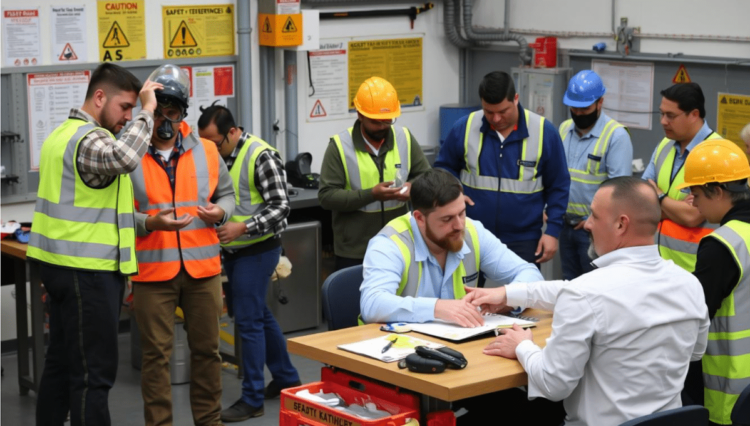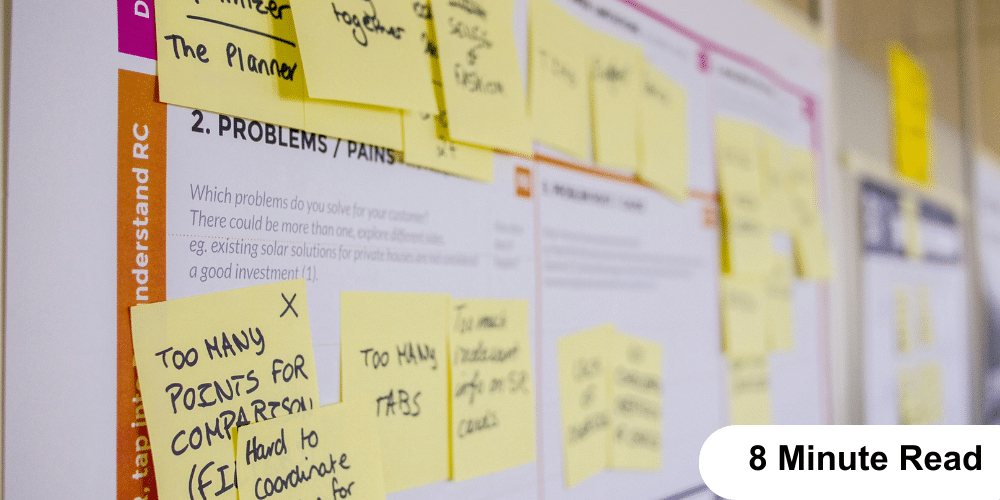ENHANCING REMOTE TEAM PERFORMANCE: 20 TECHNIQUES FOR ENGAGING SESSIONS
We’ve all experienced those dreary virtual meetings where the presenter’s monologue feels endless, leaving participants disengaged and prone to distraction. As a team leader or facilitator, avoiding such pitfalls and adopting interactive approaches is imperative to enhance remote team performance, and captivate their attention and drive home key messages.
IMPORTANCE OF ENGAGEMENT IN REMOTE SETTINGS
Engagement becomes important in a remote setting where physical distance separates team members. Engaged employees are more likely to be motivated, productive, and committed to achieving organizational goals, even in a virtual environment.
Now, let’s talk about 20+ techniques for enhancing remote team performance.
EMBRACE INTERACTIVE PLATFORMS
Utilize collaborative tools like Slack, Microsoft Teams, or Zoom to foster real-time engagement and encourage active participation among team members. However, it’s important to note that some team members may be less comfortable with these tools. To overcome this, consider providing a brief tutorial or a guide on how to use these tools effectively. These platforms streamline communication and allow spontaneous brainstorming sessions and quick decision-making processes.
With these interactive platforms, teams can break down geographical barriers, allowing members from different locations to collaborate seamlessly.
Save Thousands Of Dollars With Coggno Prime Subscription
BREAK THE ICE
Commence sessions with icebreaker activities to establish rapport and create a conducive atmosphere for interaction. Icebreakers can range from simple introductions to more creative exercises encouraging team members to share personal anecdotes or fun facts about themselves.
These activities help team members get to know each other personally and alleviate any initial tension or awkwardness, particularly in virtual settings where face-to-face interaction may be limited.
POLLING AND SURVEYS
Integrate polling features within virtual meeting platforms to solicit feedback, gauge opinions, and spark discussions. This will provide an opportunity for every team member to contribute their thoughts and preferences, regardless of their comfort level with speaking up in a group setting.
These tools enable real-time data collection and allow facilitators to quickly assess the group’s pulse on various topics or decisions. Furthermore, the anonymity offered by these features can encourage more honest responses.
UTILIZE MULTIMEDIA
Incorporate multimedia elements such as videos, infographics, and slideshows to diversify content and cater to different learning preferences. This can enhance participant engagement and information retention.
Moreover, incorporating interactive elements such as clickable links or embedded quizzes can further enhance participant involvement and comprehension. It will capture the team’s attention and stimulate their interest.
GAMIFICATION
Introduce gamified elements like quizzes, challenges, or virtual rewards to infuse a sense of fun and competition into remote sessions. Gamification taps into intrinsic human desires for mastery, autonomy, and social interaction, making remote sessions more enjoyable and rewarding.
With this, you can transform mundane tasks into engaging activities that motivate participation and boost enthusiasm among team members.
ACTIVE LISTENING
Encourage active listening by prompting participants to summarize key points or ask clarifying questions throughout the session. Active listening enhances engagement and participation and encourages a more inclusive dialogue.
This creates a more dynamic and enriching learning experience that encourages active participation and fosters meaningful interaction among participants.
ENCOURAGE CONTRIBUTIONS
Create opportunities for team members to contribute ideas, share experiences, or present findings relevant to the discussion topic. Encouraging contributions promote diversity of thought and perspective and tap into the team’s collective knowledge and expertise. Providing designated time slots or open-floor segments within meetings allows individuals to voice their thoughts without feeling overshadowed or interrupted, fostering a sense of inclusivity and respect for each team member’s input.
Furthermore, acknowledging and appreciating contributions without judgment, whether through verbal recognition or tangible rewards, reinforces the importance of active participation and cultivates a supportive and inclusive team environment.
UTILIZE WHITEBOARDS
Virtual whiteboards offer a versatile platform where team members can freely express their ideas, sketch diagrams, or map out workflows in real time with features such as drawing tools, sticky notes, and text boxes, regardless of their physical location.
Moreover, virtual whiteboards allow seamless integration with other digital tools and resources, enabling teams to incorporate multimedia elements or reference external sources. They can also save and revisit whiteboard sessions, ensuring valuable insights and contributions are captured for future reference or further development.
ROTATE FACILITATORS
Distribute facilitation responsibilities among team members to foster ownership, collaboration, and skill development. By rotating the role of facilitator, you empower individuals to take ownership of the virtual meeting process and actively contribute to it. Rotating facilitators provides valuable opportunities for skill development, allowing team members to hone their communication, time management, and problem-solving abilities in a supportive environment.
Furthermore, it promotes inclusivity and diversity of perspectives, as different facilitators may bring unique styles and approaches to meetings, enriching the overall experience for participants.
TIME MANAGEMENT
To maintain focus and productivity, adhere to a structured agenda with designated time slots for each agenda item. Structured agendas ensure that discussions stay on track and relevant topics are addressed within the allotted time frame.
Furthermore, clear time allocations help distribute attention evenly among agenda items, preventing any single topic from dominating the discussion or being rushed through. Adhering to a structured agenda demonstrates respect for participants’ time and promotes accountability for meeting objectives.
ACTIVE PARTICIPATION
Encourage active participation through open-ended questions, group discussions, or breakout room activities. Open-ended questions prompt deeper reflection and invite diverse perspectives. On the other hand, group discussions provide a platform for collaborative exploration of ideas and building consensus through shared dialogue.
Breakout room activities offer smaller, more intimate settings where participants can contribute more freely and interact with peers in a less formal environment. These activities promote active engagement and cultivate a sense of community and belonging within the team.
PEER LEARNING
Promote peer-to-peer learning by facilitating knowledge-sharing sessions where team members can showcase expertise or share best practices. These sessions create opportunities for individuals to learn from each other’s experiences, skills, and perspectives.
Furthermore, peer learning sessions can strengthen relationships and build trust among team members as they collaborate and support each other in their professional development journeys.
UTILIZE CASE STUDIES
Case studies offer tangible examples of theoretical concepts applied in practical situations. By analyzing real-life scenarios, team members can gain a deeper appreciation for the complexities and nuances of decision-making processes within their field.
Moreover, case studies stimulate critical thinking and problem-solving skills as participants are challenged to identify root causes, evaluate alternative solutions, and anticipate potential outcomes based on the information presented.
PERSONALIZED FEEDBACK
Provide personalized feedback and constructive criticism to individual team members to foster continuous improvement and skill development. Tailoring feedback to each team member’s specific strengths and areas for growth demonstrates a commitment to their professional development and reinforces a culture of support and accountability. This approach has been proven to be highly effective in enhancing team performance and individual growth.
Providing specific examples and actionable recommendations in feedback enables team members to understand how they can apply the feedback to their day-to-day work and make meaningful progress toward their goals.
MINDFULNESS PRACTICES
Integrating mindfulness practices into virtual team meetings or work sessions provides valuable opportunities for participants to pause, center themselves, and cultivate a sense of presence in the moment.
Simple mindfulness exercises, such as deep breathing or body scans, can help individuals ground themselves and alleviate stress or anxiety, improving their ability to concentrate and engage fully in the task. It also allows team members to recharge their energy levels and maintain balance amidst busy schedules.
ROLE-PLAYING
Role-playing provides a safe and interactive environment for team members to practice and refine their interpersonal skills, such as active listening, conflict resolution, and negotiation. Role-playing exercises enable team members to develop problem-solving abilities by brainstorming creative solutions to hypothetical situations.
Furthermore, debriefing sessions following role-playing exercises allow participants to reflect on their experiences, share feedback, and identify areas for improvement collaboratively.
GUEST SPEAKERS
Invite industry experts or guest speakers to share insights, trends, or best practices relevant to your team’s objectives. Industry experts can provide firsthand knowledge and real-world experiences that complement and enrich your team’s expertise.
Furthermore, interactions with guest speakers can serve as networking opportunities, fostering connections and collaboration within the broader professional community.
VISUAL SCRIBES
Employ visual scribes or graphic facilitators to capture key points and ideas discussed during remote sessions. Visual scribing involves creating real-time visual representations of the content and discussions using drawings, diagrams, and illustrations.
Visual scribes can help distill complex concepts into easily digestible visuals, making abstract ideas more concrete and accessible to all team members. They also provide a tangible record of the session’s discussions and outcomes, which can be a reference point for future meetings or follow-up activities.
PEER EVALUATION
Peer evaluation offers a valuable opportunity for team members to receive constructive feedback from their colleagues. It can provide useful insights into individual strengths and areas for growth.
Furthermore, receiving feedback from peers can offer a different perspective than feedback from supervisors, providing a more well-rounded performance assessment. This mechanism can help identify and address issues or conflicts early on before they escalate and impact team dynamics or performance.
CONTINUOUS IMPROVEMENT
Regularly solicit feedback from team members to identify areas for improvement and refine remote engagement strategies accordingly. Feedback can be gathered through surveys, one-on-one discussions, or dedicated feedback sessions that allow team members to express their thoughts, concerns, and suggestions openly and honestly.
Analyzing feedback systematically enables you to pinpoint specific pain points or areas of inefficiency in remote engagement, allowing you to tailor solutions and interventions accordingly.
Take the course: Train Your Remote Team With 20+ Techniques (Course)
Explore other courses from the same author as well.
BOTTOM LINE
The key to success lies in disseminating information and fostering active participation and a sense of ownership among team members. Follow the above techniques, adapt them to your team’s unique needs, and watch your remote sessions become vibrant, productive, and impactful.
If you are looking for training to enhance remote team performance, look no further than Coggno. Coggno fulfills all your training needs and how.
Maximize Training, Minimize Costs With Coggno Prime









